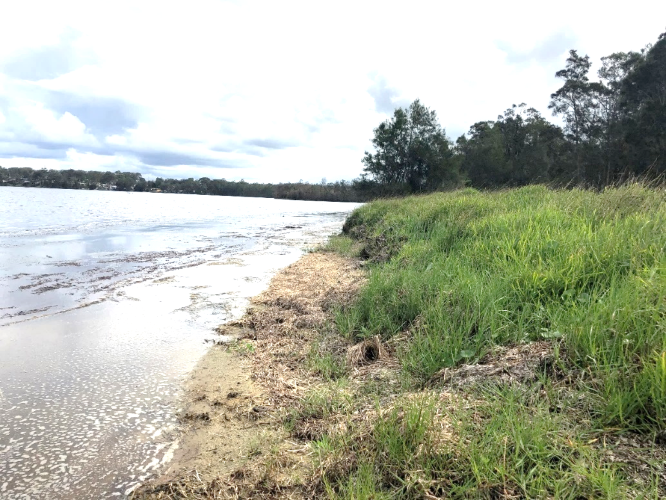Consultation on this project has now concluded.
Council undertook a series of projects around the Tuggerah Lakes estuary and catchment to maintain environmental resilience, restore the quality of ecosystems and improve the water quality of the catchment.
These projects focused on environmental estuary zones such as foreshores, saltmarsh, riparian zones, wetlands and streambanks.
Have your say
The rehabilitation works took place over almost three years (June 2020 - March 2023). During this time, we consuklted the community to find out how they use specific foreshore areas and what they value about Tuggerah Lakes.
What we heard was considered to implement these works.
The community were invited to:
- Take our online survey (now closed)
- View our interactive map of the works taking place (closed for comment)
- Read our frequently asked questions (right sidebar of this page)
Explore the interactive map by clicking the 'view interactive map' button below. This map highlights the works taking place and the feedback Council received that assisted the design phase of these projects.
These projects are part of the Tuggerah Lakes Estuary and Catchment Ecological Health Project funded by the Environmental Restoration Fund Grant, managed by The Department of Industry, Science, Energy and Resources on behalf of the Department of Agriculture, Water and the Environment.

Rehabilitation locations and works
At this site, Council is planning an active and passive saltmarsh rehabilitation project located along the water’s edge behind Diamond Head Drive, Budgewoi. This will aim to restore the Coastal Saltmarsh habitat, an endangered ecological community (EEC), while also focusing on stabilising the foreshore and improving the surrounding wildlife habitat. This will be achieved through passive saltmarsh rehabilitation works, combined with bush regeneration activities that will target weed species.
Active saltmarsh rehabilitation practices, such as modifying the foreshore shape to create an appropriate slope (ideal for saltmarsh) and help decrease the impact of wave energy, will be used to create a suitable foreshore environment for saltmarsh growth. This is will be complemented by the use of passive saltmarsh rehabilitation practices such as transplanting, mulching and weed control, to promote the growth of Coastal Saltmarsh, stabilise the foreshore, and establish the appropriate conditions for seagrass wrack to wash ashore and dry (assimilation).
Council invites you to indicate where and why you use this foreshore zone by pinning comments to the interactive map and completing our survey.
For more information on estuary rehabilitation and restoration activities please see our frequently asked questions.
This project is a part of the Tuggerah Lakes Estuary and Catchment Ecological Health Project funded by the Australian Federal Government's Environmental Restoration Fund grant.
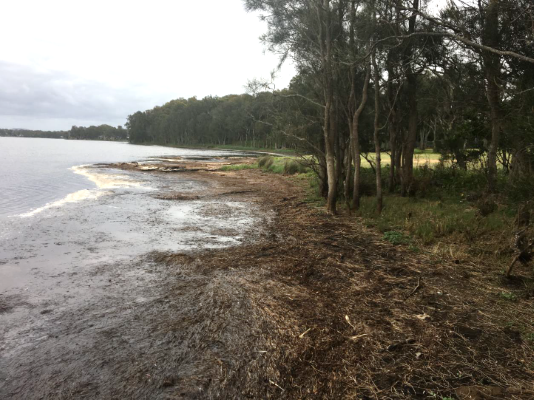
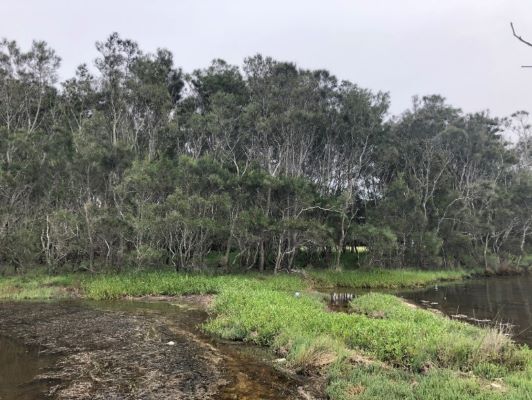
At this site Council is planning a passive saltmarsh rehabilitation project. This will aim to restore the Coastal Saltmarsh habitat, an endangered ecological community (EEC), while also focusing on stabilising the foreshore and improving the surrounding wildlife habitat. This will be achieved through passive saltmarsh rehabilitation works, combined with bush regeneration activities that will target weed species.
Passive saltmarsh rehabilitation practices such as transplanting, mulching and weed control will be used to promote the growth of Coastal Saltmarsh, stabilise the foreshore, and establish the appropriate conditions for seagrass wrack to wash ashore and dry (assimilation).
Council invites you to indicate where and why you use this foreshore zone by pinning comments to the interactive map and completing our survey.
For more information on estuary rehabilitation and restoration activities please see our frequently asked questions.
This project is a part of the Tuggerah Lakes Estuary and Catchment Ecological Health Project funded by the Australian Federal Government's Environmental Restoration Fund grant.
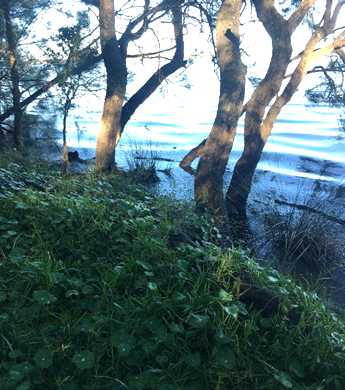
At this site, Council is planning a passive saltmarsh rehabilitation project. This will aim to restore the Coastal Saltmarsh habitat, an endangered ecological community (EEC), while also focusing on stabilising the foreshore and improving the surrounding wildlife habitat. This will be achieved via passive saltmarsh rehabilitation works, combined with bush regeneration activities that will target weed species.
Passive saltmarsh rehabilitation practices such as transplanting, mulching and weed control will be used to promote the growth of Coastal Saltmarsh, stabilise the foreshore, and establish the appropriate conditions for seagrass wrack to wash ashore and dry (assimilation).
Council invites you to indicate where and why you use this foreshore zone by pinning comments to the interactive map and completing our survey.
For more information on estuary rehabilitation and restoration activities please see our frequently asked questions.
This project is a part of the Tuggerah Lakes Estuary and Catchment Ecological Health Project funded by the Australian Federal Government's Environmental Restoration Fund grant.
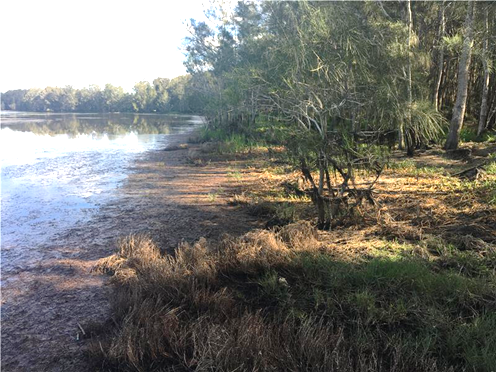
At this site, Council is planning a passive saltmarsh rehabilitation project located on the foreshore of Osbourne Park, adjacent to Peel Street, Toukley. This will aim to restore the Coastal Saltmarsh habitat, an endangered ecological community, while also focusing on stabilising the foreshore and improving the surrounding wildlife habitat. This will be achieved via passive saltmarsh rehabilitation works, combined with bush regeneration activities that will target weed species.
Passive saltmarsh rehabilitation practices such as transplanting, mulching and weed control will be used to promote the growth of Coastal Saltmarsh, stabilise the foreshore, and establish the appropriate conditions for seagrass wrack to wash ashore and dry (assimilation).
Council invites you to indicate where and why you use this foreshore zone by pinning comments to the interactive map and completing our survey.
For more information on estuary rehabilitation and restoration activities please see our frequently asked questions.
This project is a part of the Tuggerah Lakes Estuary and Catchment Ecological Health Project funded by the Australian Federal Government's Environmental Restoration Fund grant.
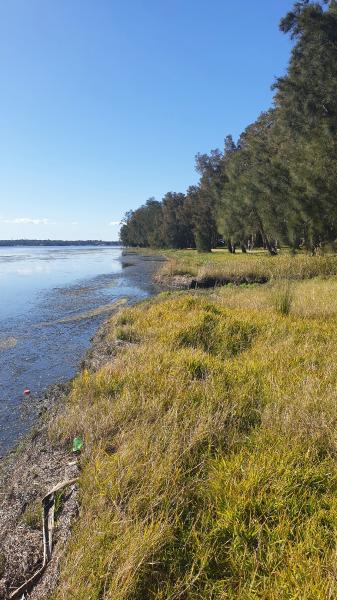
At this site, Council is planning an active and passive saltmarsh rehabilitation project. This will aim to restore the Coastal Saltmarsh habitat, an endangered ecological community, manage foreshore erosion and improve the surrounding wildlife habitat. This will be achieved through passive saltmarsh rehabilitation practices, combined with bush regeneration activities that will target weed species.
Active saltmarsh rehabilitation practices, such as modifying the foreshore shape to create an appropriate slope (ideal for saltmarsh) and help decrease the impact of wave energy, will be used to create a suitable foreshore environment for saltmarsh growth. This is will be complemented using passive saltmarsh rehabilitation practices such as transplanting, mulching and weed control, to promote the growth of Coastal Saltmarsh, stabilise the foreshore, and establish the appropriate conditions for seagrass wrack to wash ashore and dry (assimilation).
Council invites you to indicate where and why you use this foreshore zone by pinning comments to the interactive map and completing our survey.
For more information on estuary rehabilitation and restoration activities please see our frequently asked questions.
This project is a part of the Tuggerah Lakes Estuary and Catchment Ecological Health Project funded by the Australian Federal Government's Environmental Restoration Fund grant.
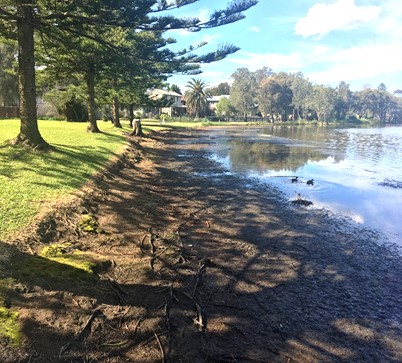
At this site, Council is planning a streambank rehabilitation project along a section of the Wyong River. This will aim to stabilise and protect the streambank from further erosion that can contribute to water quality issues and tree-fall into the river. This will be achieved by using soft-engineering stabilisation techniques and complemented by planting native vegetation species.
For more information on estuary rehabilitation and restoration activities please see our frequently asked questions.
This project is a part of the Tuggerah Lakes Estuary and Catchment Ecological Health Project funded by the Australian Federal Government's Environmental Restoration Fund grant.
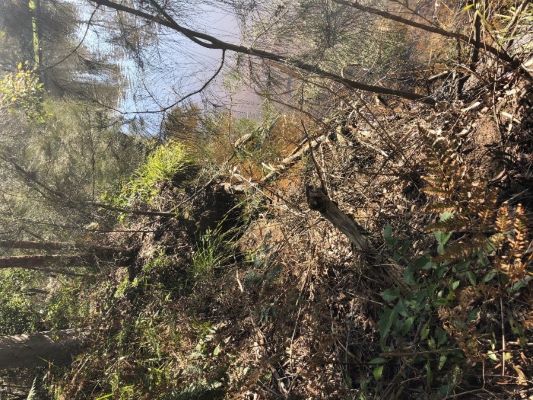
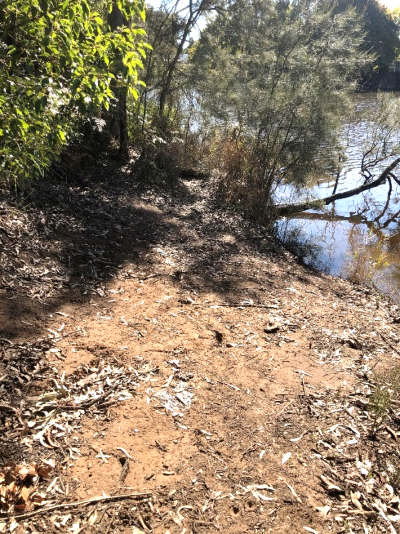
At this site, Council is planning a foreshore rehabilitation project, located on the foreshore parallel to Kimilaroo Avenue, Lake Munmorah. This will aim to reduce foreshore erosion from wave action and runoff, stabilise water access points, and restore the surrounding Coastal Saltmarsh habitat, an endangered ecological community.
This will be achieved by restructuring the foreshore to create low impact water access points (which will stabilise the foreshore), complemented by saltmarsh rehabilitation and bush regeneration practices.
Council invites you to indicate where and why you use this foreshore zone by pinning comments to the interactive map and completing our survey.
For more information on estuary rehabilitation and restoration activities please see our frequently asked questions.
This project is a part of the Tuggerah Lakes Estuary and Catchment Ecological Health Project funded by the Australian Federal Government's Environmental Restoration Fund grant.
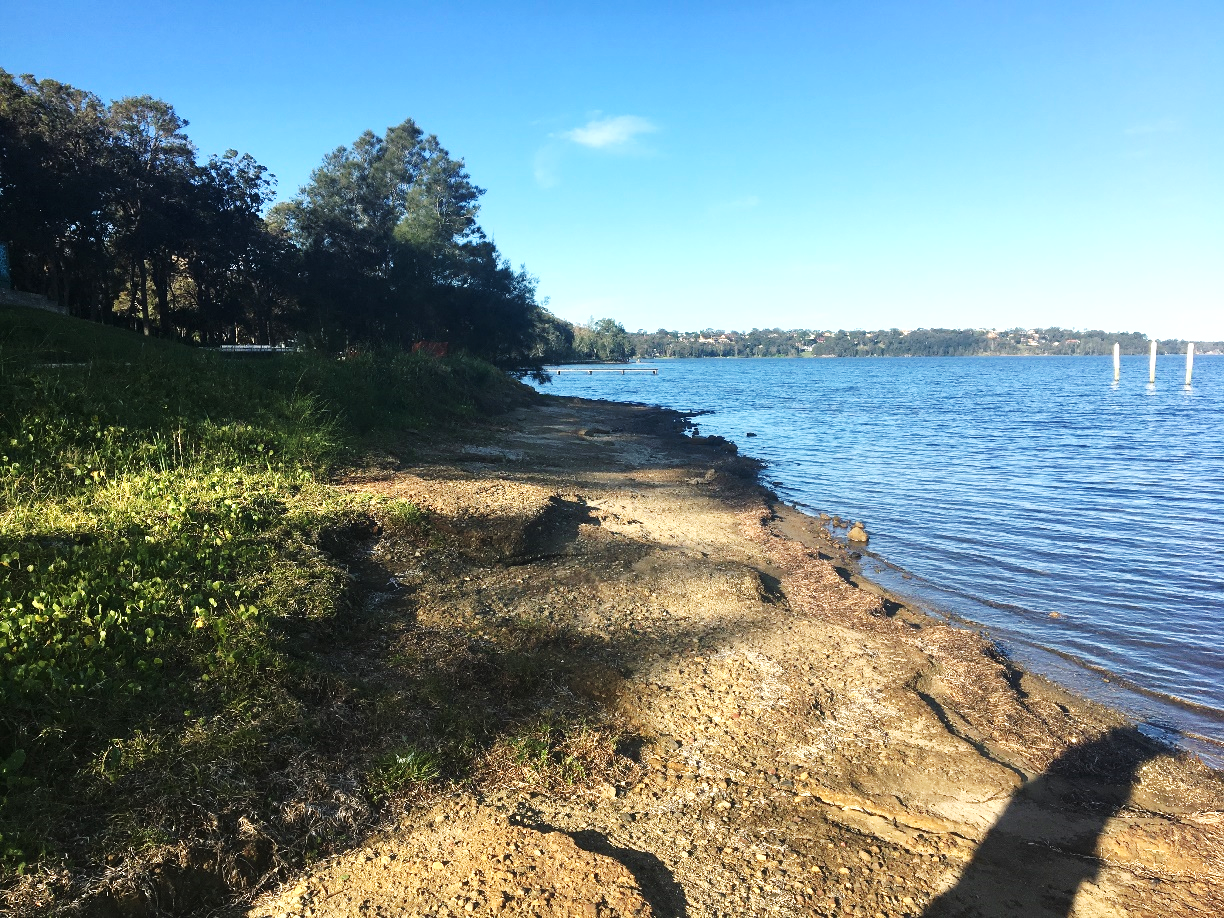
At this site, Council is planning a passive saltmarsh rehabilitation project located adjacent to Don Small Oval, Tacoma. This will aim to restore the Coastal Saltmarsh habitat, an endangered ecological community, while also focusing on stabilising the foreshore and improving the surrounding wildlife habitat. This will be achieved by passive saltmarsh rehabilitation practices, combined with bush regeneration activities that will target weed species.
Passive saltmarsh rehabilitation practices such as transplanting, mulching and weed control will be used to promote the growth of Coastal Saltmarsh, stabilise the foreshore, and establish the appropriate conditions for seagrass wrack to wash ashore and dry (assimilation).
For more information on estuary rehabilitation and restoration activities please see our frequently asked questions.
This project is a part of the Tuggerah Lakes Estuary and Catchment Ecological Health Project funded by the Australian Federal Government's Environmental Restoration Fund grant.
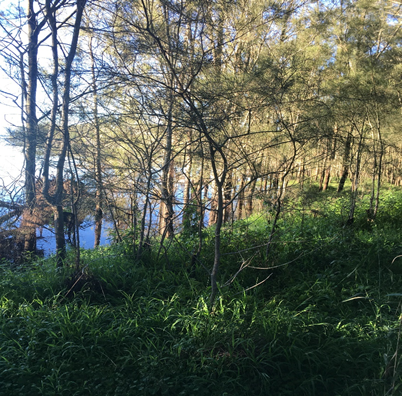
At this site, Council is planning a streambank rehabilitation project in the bush reserve located adjacent to Woodland Parkway, Budgewoi. This project will aim to restore natural instream processes that filter water moving through the site and improve the native habitat. This will be achieved by a combination of restructuring parts of the streambank, weed management and planting native species.
For more information on estuary rehabilitation and restoration activities please see our frequently asked questions.
This project is a part of the Tuggerah Lakes Estuary and Catchment Ecological Health Project funded by the Australian Federal Government's Environmental Restoration Fund grant.
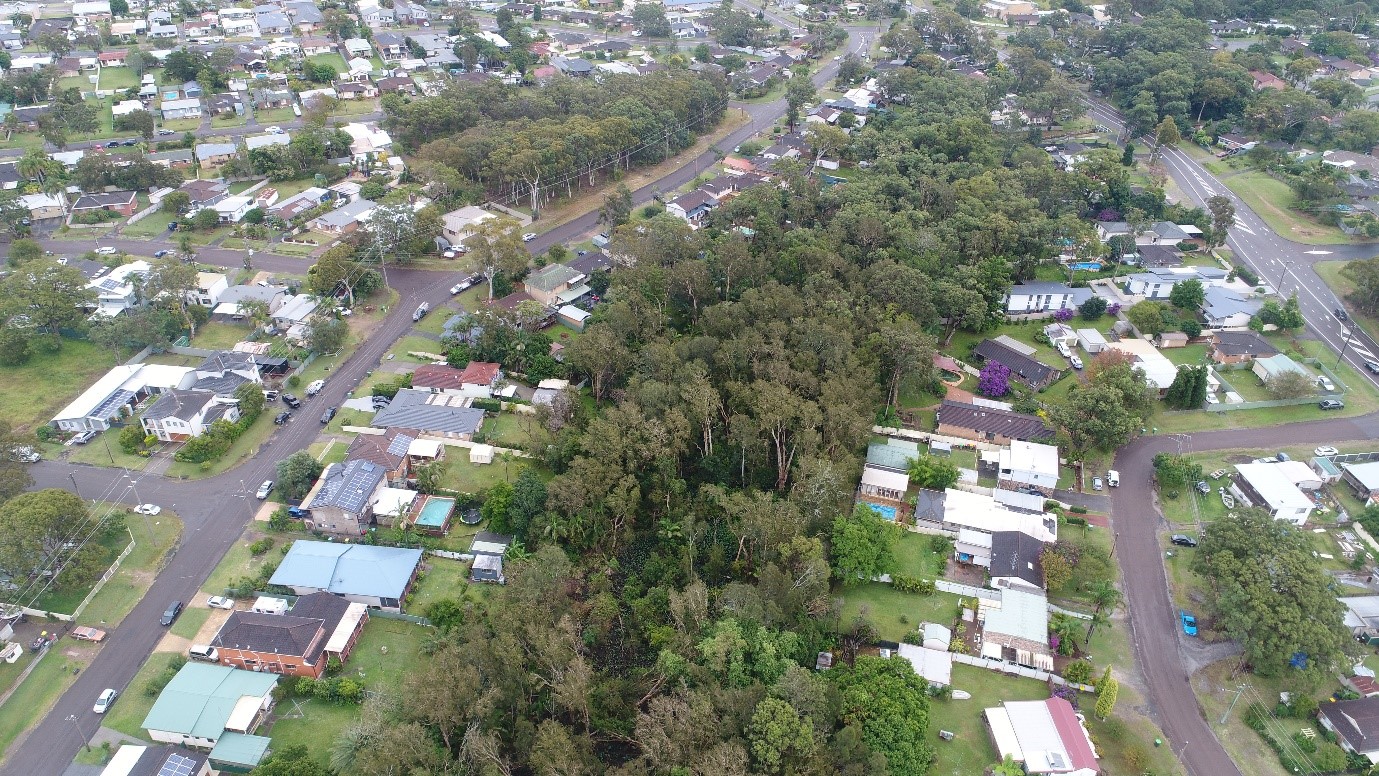
At this site, Council is planning a foreshore rehabilitation project. This will aim to reduce the impacts of wave action on the foreshore with a focus on restoring the Coastal Saltmarsh habitat, an endangered ecological community, while also improving the surrounding wildlife habitat. This will be achieved by saltmarsh rehabilitation practices, combined with bush regeneration activities that will target invasive weed species, primarily focusing on the removal of Spiny Rush (Juncus acutus), and Asparagus fern (Asparagus setaceus).
Council invites you to indicate where and why you use this foreshore zone by pinning comments to the interactive map and completing our survey.
For more information on estuary rehabilitation and restoration activities please see our frequently asked questions.
This project is a part of the Tuggerah Lakes Estuary and Catchment Ecological Health Project funded by the Australian Federal Government's Environmental Restoration Fund grant.
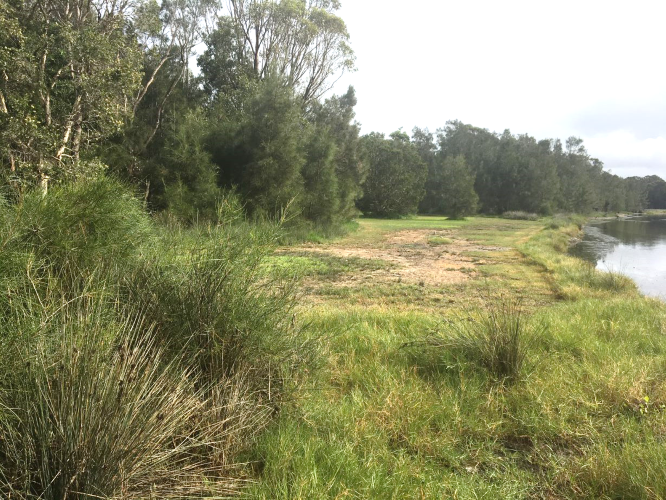
At this site, Council is planning an active and passive saltmarsh rehabilitation project. This will aim to restore the Coastal Saltmarsh habitat, an endangered ecological community, while also focusing on managing foreshore erosion and improving the surrounding wildlife habitat. This will be achieved through passive saltmarsh rehabilitation practices, combined with bush regeneration activities that will target weed species.
Active saltmarsh rehabilitation practices, such as modifying foreshore shape to create an appropriate slope (ideal for saltmarsh) and help decrease the impact of wave energy, will be used to create a suitable foreshore environment for saltmarsh growth. This is will be complemented by the use of passive saltmarsh rehabilitation practices such as transplanting, mulching and weed control, to promote the growth of Coastal Saltmarsh, stabilise the foreshore, and establish the appropriate conditions for seagrass wrack to wash ashore and dry (assimilation).
Council invites you to indicate where and why you use this foreshore zone by pinning comments to the interactive map and completing our survey.
For more information on estuary rehabilitation and restoration activities please see our frequently asked questions.
This project is a part of the Tuggerah Lakes Estuary and Catchment Ecological Health Project funded by the Australian Federal Government's Environmental Restoration Fund grant.
